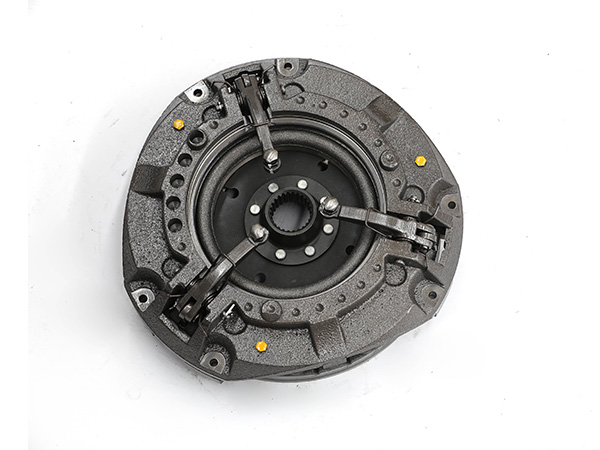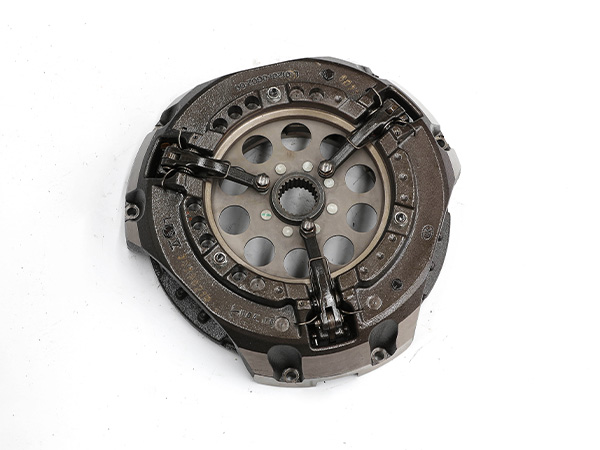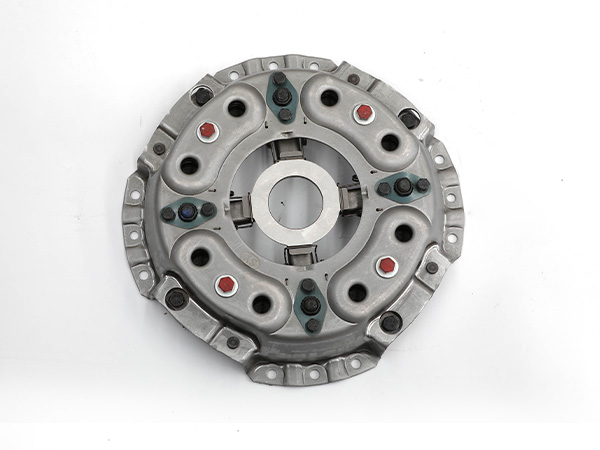The clutch assembly in an agricultural tractor is a crucial component that connects and disconnects the engine power to the transmission system. It allows the operator to engage or disengage the power from the engine to the transmission, enabling smooth shifting of gears and control over the tractor’s movement.
Here are the key components and functions of an agriculture tractor clutch assembly
Clutch Plate: The clutch plate, also known as the friction disc, is the primary component that facilitates power transmission. It consists of a friction material lining (typically made of organic, metallic, or ceramic materials) that makes contact with the flywheel and pressure plate. When engaged, it transfers the engine power to the transmission.

Flywheel: The flywheel is a heavy rotating disk attached to the rear end of the engine crankshaft. It provides rotational momentum and helps smooth out engine vibrations. The clutch plate makes contact with the flywheel when engaged.
Pressure Plate: The pressure plate is a spring-loaded component that holds the clutch plate against the flywheel. It exerts pressure on the clutch plate, creating the necessary friction for power transfer. When the clutch pedal is depressed, the pressure plate releases the clutch plate, disengaging the power transmission.
Clutch Release Bearing: The clutch release bearing, also known as the throw-out bearing, is responsible for engaging and disengaging the clutch. It moves along the clutch fork as the clutch pedal is pressed or released, causing the pressure plate to compress or release the clutch plate.

Clutch Fork and Linkage: The clutch fork is a lever that connects the clutch pedal to the clutch release bearing. When the clutch pedal is depressed, it pushes the clutch fork, which in turn moves the clutch release bearing to disengage the clutch.
Pilot Bearing/Bushing: The pilot bearing or bushing is located in the center of the flywheel and supports the transmission input shaft. It ensures smooth rotation of the transmission input shaft when the clutch is engaged.
Clutch Pedal and Hydraulic System (optional): Some modern agricultural tractors use hydraulic systems to assist with clutch operation. A hydraulic clutch system employs a master cylinder, slave cylinder, and hydraulic fluid to transmit force from the clutch pedal to the clutch release bearing, enhancing ease of operation.

Proper maintenance and periodic inspection of the clutch assembly are essential to ensure its optimal performance and longevity. Regular lubrication, adjustment of the clutch pedal free play, and timely replacement of worn-out components are necessary to prevent clutch slippage, excessive wear, and premature failure. It’s recommended to refer to the tractor manufacturer’s guidelines and seek professional assistance for any clutch-related issues or replacements.

-80x80.jpg)
